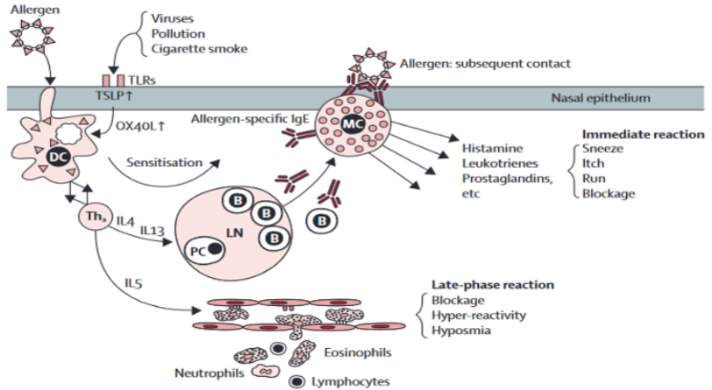


Journal of Pharmaceutical Research
DOI: 10.18579/jopcr/v21i4.MS221204
Year: 2022, Volume: 21, Issue: 4, Pages: 105-113
Review Article
Khatri Upasana ✉ 1 , Saini Sunil 2 , Bharkatiya Meenakshi 1
1 Faculty of Pharmacy, Bhupal Nobles' University, Udaipur, Rajathan, 313001, India
2 Assistant Professor, Department of Chemistry, Pharmacy Wing, Jai Narain Vyas University, Jodhpur, Rajasthan, 342802, India
Corresponding author ✉: [email protected]
Many drugs are available to treat allergic condition. This review focused on why antihistaminics are best choice for treatment of allergic disorder especially allergic rhinitis (AR). AR is a chronic inflammatory disease. AR can be detected by its characteristics of nasal congestion, nasal itching, sneezing, rhinorrhoea, pruritis, redness, tearing and itching of eyes. This is very common and increases day after day. Allergic rhinitis is not lethal but interferes with daily schedule in a sustained manner. It is also observed that after COVID-19, stimuli reactions such as allergic condition, breathing difficulties and nasal irritation are quite common. It is very necessary to treat AR with an effective and powerful medicine because nowadays, many factors trigger these responses such as the environment, food products, pollution, etc. Before treatment of any symptoms it is very necessary to know it pathogenesis. Hence, in this review, we discuss the introduction of AR, its pathogenesis, diagnostics, classification and treatment. We also understand why levocetirizine, a third-generation antihistamine, is superior to all other antihistamines and the most favourable in paediatric patients in many ways.
Keywords: Allergic rhinitis, Antihistaminic, Levocetirizine, COVID19, Asthma, Nasal congestion
© 2022 Published by Krupanidhi College of Pharmacy. This is an open-access article under the CC BY-NC-ND license (https://creativecommons.org/licenses/by-nc-nd/4.0/)
Subscribe now for latest articles and news.